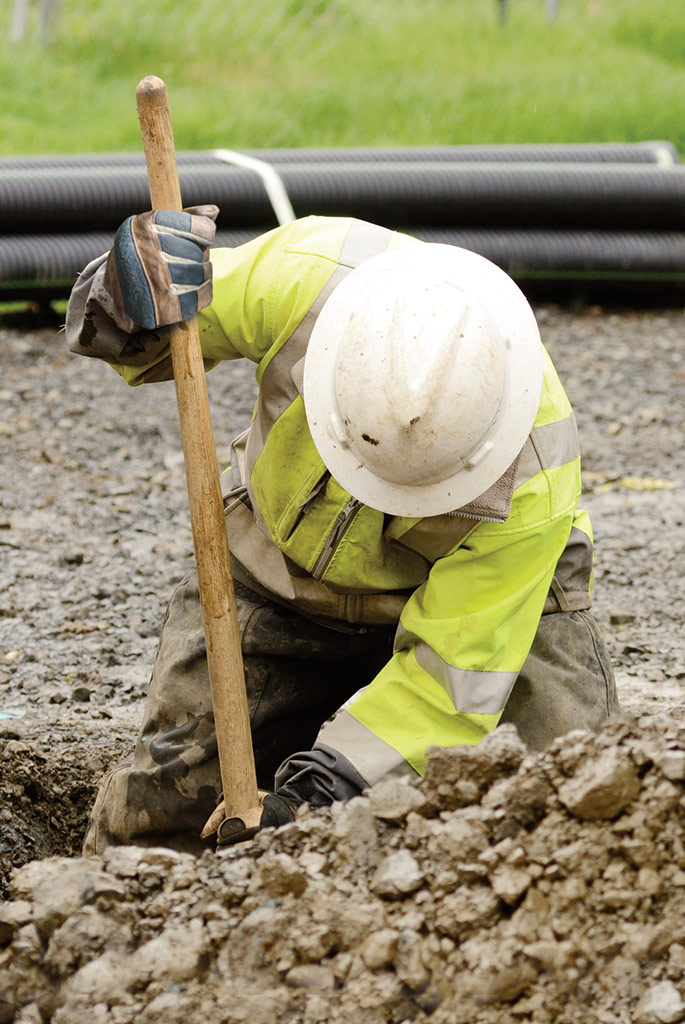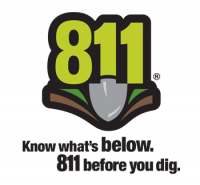Safe hand-digging techniques
After you’ve called 811, waited the required time and confirmed that all buried utility lines on your job site have been located and marked, your power-digging work can begin, right?
Not yet. Before you can safely work near an underground utility line, you must first hand dig around the line to expose it and verify its exact location and depth. Hand-digging requirements vary by state.
- In New York: Only use hand tools or vacuum technology within the tolerance zone, which is the width of the marked utility plus 24 inches on either side of the outside edge.
- In Massachusetts: Power digging is not allowed, and hand digging or other nonintrusive methods are required within 18 inches of either side of the marked location of buried utilities.
Dig with care
Whenever you hand dig near buried utility lines, take care to prevent damage:
- Use a rounded or blunt-edged shovel. Sharp tools like pickaxes, mattocks, pry bars or pointed spades may gouge or puncture lines.
- Begin digging off to the side of the marked utility line. Use a gentle, prying motion to break away soil as you approach the utility laterally.
- Proceed cautiously. Don’t assume the marks are accurate or that the utility depth is predictable.
- Never pry against a utility line to remove soil. Don’t stab at the soil or stomp on the shovel with both feet.
- Dig until you find the actual line, not just a tracer wire or warning tape.
Protect yourself
Always wear proper personal protective equipment (PPE) and avoid muscle strain. Don’t twist your torso to move the dirt; instead, move your feet to turn your entire body. Alternate shoveling between your left and right sides, and take breaks to prevent fatigue.
Protect utility lines
Protect all exposed utility lines by supporting them with materials that will not damage the conduit or pipe or its coating. Use special care to protect cast-iron pipelines. Cast iron natural gas mains are vulnerable to damage when the earth around or near them is moved in any way. Notify National Grid immediately when your excavation may encroach on a cast iron natural gas main by crossing its path or even running parallel nearby.
When it’s time to backfill, follow these tips:
- Check exposed lines for damage; report even minor scrapes or dents to National Grid.
- Backfill under exposed lines by hand, using a blunt-edged shovel.
- Remove rocks or concrete from soil used for backfill to prevent damage as the soil settles around the reburied lines.
Report ALL damage
Even a slight gouge, scrape or dent in an electric conduit, a gas pipeline or a pipeline’s coating may cause a catastrophic break or leak in the future. And if the tracer wire installed with plastic underground natural gas lines is broken or compromised during your excavation and not repaired, future excavators and the public are endangered because the plastic natural gas line can no longer be located.
Report even minor damage to any utility line to National Grid immediately, so crews can inspect the line and make the necessary repairs. And if you uncover or hit an unmarked line, never assume it is inactive or abandoned. Always report it.

